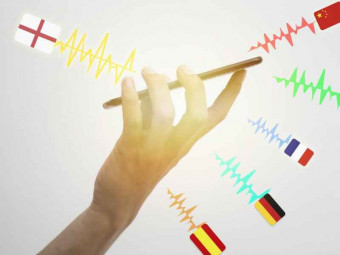Understanding Macroeconomics For University And Business
Tags: Macroeconomics
Explaining the economics of fiscal policy, money creation, and monetary policy
Last updated 2022-01-10 | 4.6
- Understand macroeconomics- Understand economic policy-making
- Make business decisions informed by knowledge of the state of the macroeconomy
What you'll learn
* Requirements
* Come with an open mind!* Basic high school level mathematics.
Description
People generally have a hard time understanding macroeconomics, but after 7 years of teaching this course at university level, I have mastered the best ways of explaining its concepts for students to be able to understand them and relate them to the real world.
This course is ideal for university students who are struggling to make sense of their textbooks and lectures, and will allow them to get better grades.
This course is also ideal for professionals and citizens who want to better understand the economic concepts they deal with in work and daily life, such as inflation, unemployment, monetary policy, and fiscal policy. This course will help you understand questions such as: Why does the government engage in expansionary fiscal policy? What is the motivation behind reducing taxes? What are the implications of a drop in interest rates? What determines the money supply? After taking this course, you will be able to better understand how macroeconomic events impact your life, and can make better-informed decisions.
The course is composed of 12 lectures, totaling 2 hours and 40 minutes of video. Each lecture will come with detailed lecture notes that emphasize and explain the main ideas. There will also be several practice problems for students to complete. For best results, students are urged to read the notes, watch the video, re-read the notes, and then solve the practice problems.
Who this course is for:
- University students who want to understand macroeconomics
- Professionals who want to understand how macroeconomics impacts their work.
- Citizens who want to understand government economic policy.
Course content
2 sections • 12 lectures
1: Introduction Preview 06:43
This lecture introduces the course, defines macroeconomics, and explains what differentiates it from microeconomics.
2: Measuring Economic Output Preview 14:45
What is economic output and how do macroeconomists measure it? What is the difference between GDP and GNP? What is the difference real GDP and nominal GDP? What GDP is and what GDP is not.
3: Unemployment & Inflation Preview 15:17
What is unemployment, and how is it measured? Who exactly counts as unemployed? What is inflation, and what are the problems with it? What is deflation? What is hyperinflation?
4: Consumption & Investment Preview 09:37
We outline the Keynesian conception of consumption, investment, and saving.
5: Equilibrium Preview 13:11
This lecture specifies the Keynesian equilibrium and the conditions by which it is identified. What do firms do when the economy is in equilibrium and when it is not in equilibrium?
6: The Multiplier Preview 13:08
In this lecture we discuss the multiplier effect: What is the impact on equilibrium output when there are changes in 1- consumption, 2-investment, and 3- savings.
7: Government and Fiscal Policy Preview 15:23
What is fiscal policy? What are the new terms of the equilibrium when we introduce government fiscal policy into the macroeconomic model? How can the government affect the economy with fiscal tools?
8: Money Preview 13:49
What is money? What are the functions of money? Discussing money's role as a medium of exchange, store of value, and unit of account. What is the money supply? How can the money supply be measured? Discussing M1 and M2.
9: Money Creation Preview 20:39
How does the banking system create money? How does bank lending create new money supply? How does the central bank control banks' creation of money. What are the tools of monetary policy.
10: Interest Rate Preview 11:46
What is the interest rate? How is the interest rate determined in the money market? What is the relationship between the interest rate and the money supply?
11: Aggregate Output & the Price Level Preview 13:21
The aggregate equilibrium as defined by the aggregate output and the aggregate price level.
The effects of monetary and fiscal policy on aggregate equilibrium.
12: Macroeconomic Policy and Equilibrium Preview 12:27
What are the major macroeconomic problems, what causes them, and how can they be addressed by government policy?
What causes recessions, and how can the central bank and government fix unemployment?
What causes inflation, and how can the central bank and government fix it?
What causes hyperinflation, and how can the central bank and government fix it?
What causes stagflation, and how can the central bank and government fix it?








 This course includes:
This course includes:
















